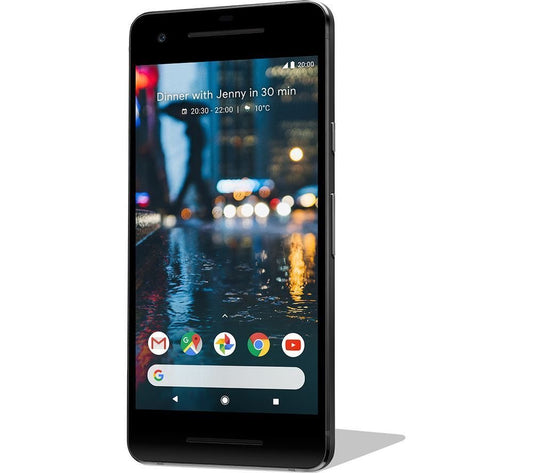Frequently Asked Questions
1. What is open-source software?
2. Why is privacy important in modern smartphones?
3. How does open-source software enhance privacy?
4. What are some features of GrapheneOS that support privacy?
5. How can users optimize their privacy with hardware settings?
In today's digital age, privacy has become a crucial concern for many users. With the increasing amount of personal data shared online, privacy phones equipped with robust operating systems focus on user confidentiality. One significant player in this domain is open-source software. In this article, we will explore how open-source software plays a vital role in developing privacy-centric smartphones, highlighting options such as the OnePlus 8 Pro and GrapheneOS.
Understanding Open-Source Software
Open-source software (OSS) refers to computer programs whose source code is made available for anyone to inspect, modify, and enhance. This open accessibility promotes collaboration and transparency among developers while empowering users with more control over their devices. Rather than relying on proprietary software, which may hide its operational secrets, open-source software ensures that users can audit the code for vulnerabilities or harmful functionalities.
The Importance of Privacy in Modern Smartphones
As smartphone usage has surged, so have privacy concerns. With every app downloaded and every site visited, users are often unaware of how their data is being collected and utilized. Privacy phones aim to change this paradigm by providing a secure environment for users to manage their digital footprint.
Data Collection and Tracking
Many commercial smartphone operating systems are designed to collect user data for targeted advertising and enhancements of services. This constant data collection leads to concerns about who has access to personal information and how it is used. Privacy phones minimize this risk by employing systems that restrict tracking and maintain user autonomy.
How Open-Source Software Enhances Privacy
Open-source software offers various benefits that resonate with privacy-conscious users:
- Transparency: With open-source, the code is public, allowing anyone to scrutinize it for security flaws or privacy issues.
- Community Contribution: A community of developers can collaboratively enhance the software, leading to quicker identification and resolution of security bugs.
- Customization: Users have the freedom to modify the software to suit their privacy needs. This means that if a user discovers unwanted data collection practices, they can adjust the code accordingly.
GrapheneOS: A Beacon of Privacy
One of the most notable open-source operating systems focused on privacy is GrapheneOS. Designed for security and privacy, GrapheneOS is compatible with selected devices such as the OnePlus 8 Pro. Here’s how GrapheneOS stands out in the realm of privacy phones:
Security Enhancements
GrapheneOS incorporates several advanced security features that protect user data, including:
- Hardening: The OS has undergone extensive hardening techniques to reduce the attack surface against various exploits.
- Sandboxed Google Play Store: Users can download apps without compromising their security or privacy, as the Play Store is operated within a safe environment.
- Privileged Restrictions: The system imposes restrictions on accessing sensitive user data and features unless permitted by the user explicitly.
Focus on User-Centric Privacy
What sets GrapheneOS apart is its commitment to ensuring users remain in control of their privacy. This means users can:
- Access and view location permissions for apps, giving them the ability to manage what data is shared.
- Utilize security updates without waiting for manufacturer or carrier interventions.
- Choose security settings that align with their comfort level, elevating privacy controls to tailor-fit individual needs.
The Role of Device Compatibility
Even the best privacy software would not be effective without secure hardware. The OnePlus 8 Pro supports an environment where GrapheneOS can be fully utilized, allowing users to take advantage of all privacy-centric features. The marriage of robust hardware with a secure OS amplifies the overall user experience in maintaining privacy.
Optimizing Users' Privacy with Hardware Settings
The capability of a privacy phone does not solely depend on the operating system. Users can also adapt their hardware settings to maximize security. Some exemplary practices include:
- Disabling unnecessary sensors, such as location and microphone, when not in use.
- Using hardware encryption to secure stored information.
- Regularly updating the hardware’s security features to stay ahead of vulnerabilities.
The Open-Source Movement and Its Community
The open-source movement thrives on collaboration, innovation, and shared objectives. Communities come together to share insights, discuss challenges, and provide support when transitioning a device to an open-source operating system. The extensive community behind platforms like GrapheneOS is vital for advancing privacy phone technology, as they contribute to discovering potential improvements and addressing user concerns.
Engaging with Open-Source Communities
For those transitioning to an open-source environment, it’s crucial to engage with communities that provide:
- Forums for discussion and queries on how to maximize privacy together.
- Documentation for installation processes, troubleshooting, and modifications.
- Updates on the latest developments and features available to the software.
Looking Ahead: The Future of Privacy Phones
The movement towards privacy phones featuring open-source software is just beginning. With growing awareness of privacy issues, an increasing number of users seek devices offering more autonomy and security. Change isn’t merely necessary; it’s inevitable.
Anticipating Trends and Evolutions
As more consumers choose privacy phones, we can anticipate:
- Greater collaboration among developers to innovate and address emerging threats in the privacy landscape.
- More manufacturers starting to adopt open-source systems in their phones, leading to a broader spectrum of privacy-centric devices.
- Improvements in user education around privacy features and how to leverage these in everyday use.
Empowering Yourself through Open-Source Privacy Phones
The call for privacy in technology is growing louder, and the stars have aligned to empower individuals. By adopting open-source software like GrapheneOS on devices such as the OnePlus 8 Pro, users can reclaim control over their data and enhance their personal security. Choosing to engage with open-source communities will further strengthen the movement, leading to better privacy-centric solutions in the future.
Ultimately, the shift towards privacy phones powered by open-source software isn't just about enhancing individual security—it's a collective step toward a more secure digital landscape for everyone. Together, we can forge a future where privacy is not a privilege but a fundamental right that is safeguarded within every device we use.








